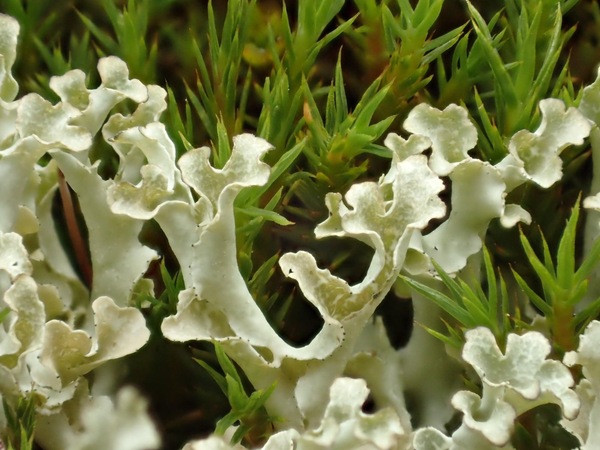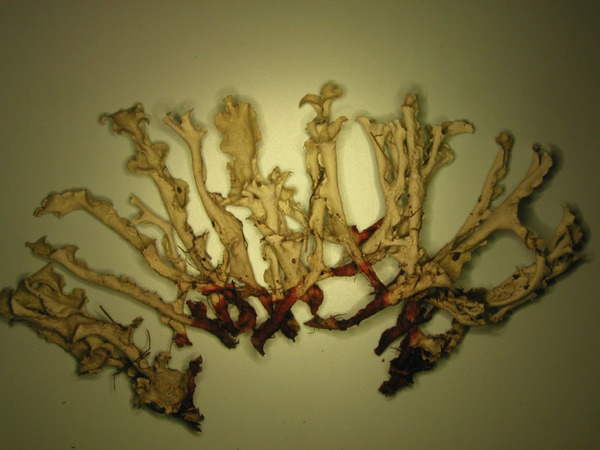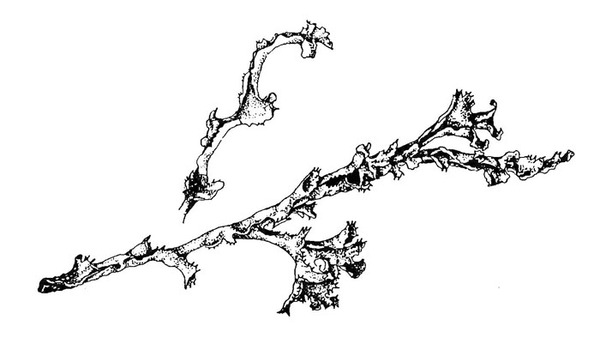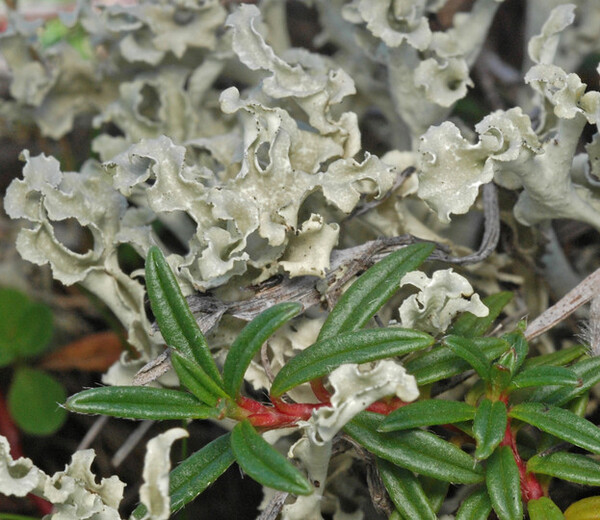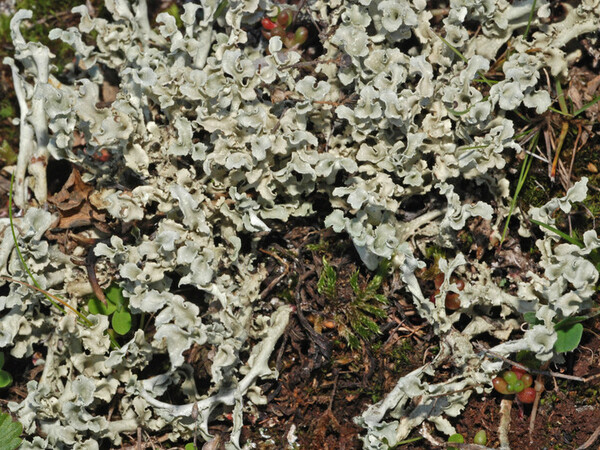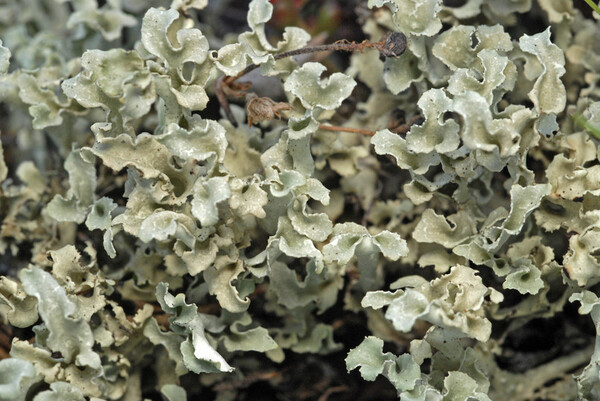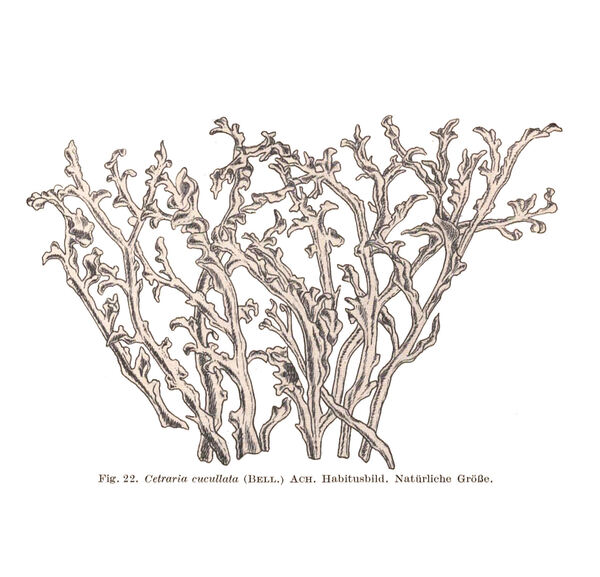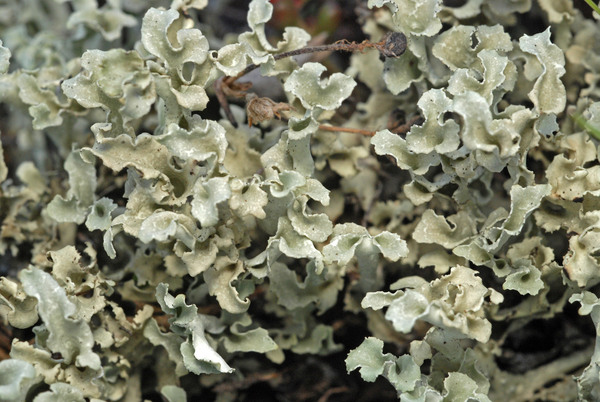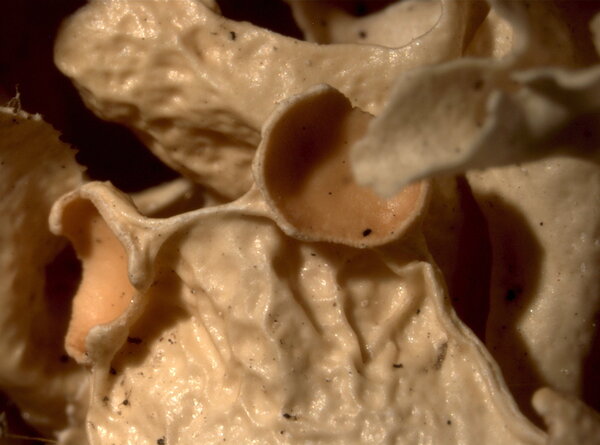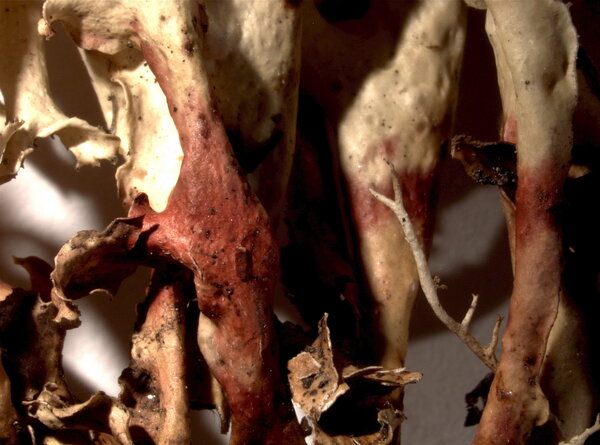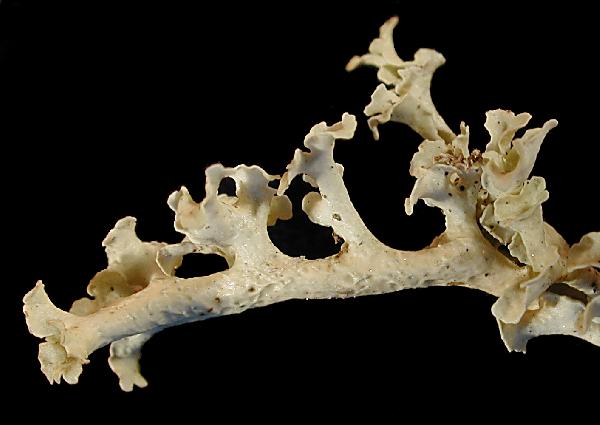Nephromopsis cucullata (Bellardi) Divakar, A. Crespo & Lumbsch
in Divakar & al., Fungal Diversity, 84: 112, 2017. Basionym: Lichen cucullatus Bellardi - Osserv. Bot.: 54, 1788.
Synonyms: Allocetraria cucullata (Bellardi) Randlane & Saag; Cetraria cucullata (Bellardi) Ach.; Flavocetraria cucullata (Bellardi) Kärnefelt & A. Thell
Distribution: N - Frl (Tretiach & Hafellner 2000), Ven (Nascimbene & Caniglia 1997, 2003c, Caniglia & al. 1999, Giovagnoli & Tasinazzo 2014), TAA (Caniglia & al. 2002, Nascimbene & Caniglia 2002c, Nascimbene & al. 2006e, 2022, Nascimbene 2008b, Thell & Moberg 2011, Brackel 2013), Lomb (Rivellini 1994, Dalle Vedove & al. 2004, Gheza 2017), Piem (Isocrono & al. 2004), VA (Piervittori & Isocrono 1999, Valcuvia 2000), Emil (Fariselli & al. 2020). C - Abr.
Description: Thallus fruticose, once or twice dichotomously branched, cream-coloured, smooth and glossy, deep red-purple to violet at the necrotic base, loosely attached, sometimes forming compact mats. Lobes flattened, smooth, canaliculate to subtubular, erect to ascending, 2-4(-8) cm tall, to 5(-10) mm wide, often white-maculate on upper surface, the margins with black, short-spinulose pycnidia; lower surface corticate, with narrow, marginal, whitish pseudocyphellae. Cortex thin, paraplectenchymatous in upper part; medulla white, rather lax. Apothecia extremely rare, zeorine, submarginal at lobe-ends, with a brown disc. Epithecium brownish; hymenium and hypothecium colourless. Asci 8-spored, narrowly clavate, with a small axial body and a distinct, K/I+ blue ring-structure in the rather large tholus, approaching the Lecanora-type. Ascospores 1-celled, hyaline, ellipsoid, 5-10 x 3-5.5 µm. Pycnidia black, immersed in marginal projections. Conidia dumbbell-shaped (thickened at both ends), c. 6 x 1 µm. Photobiont chlorococcoid. Spot tests: cortex K-, C-, KC+ yellowish, P-: medulla K-, C-, KC-, P-; reddish basal parts K+ red. Chemistry: cortex with usnic acid; medulla with lichesterinic and protolichesterinic acids; basal necrotic parts with anthraquinones. Note: a circumpolar, arctic-alpine lichen, a typical element of tundra-like vegetation in open, dry habitats above treeline, most frequent on basic siliceous substrata, in wind-exposed ridges. The species was neotypified on an Italian specimen (see Thell & Moberg 2011).
Growth form: Fruticose
Substrata: soil, terricolous mosses, and plant debris
Photobiont: green algae other than Trentepohlia
Reproductive strategy: mainly asexual, by thallus fragmentation
Commonnes-rarity: (info)
Alpine belt: common
Subalpine belt: very rare
Oromediterranean belt: absent
Montane belt: absent
Submediterranean belt: absent
Padanian area: absent
Humid submediterranean belt: absent
Humid mediterranean belt: absent
Dry mediterranean belt: absent
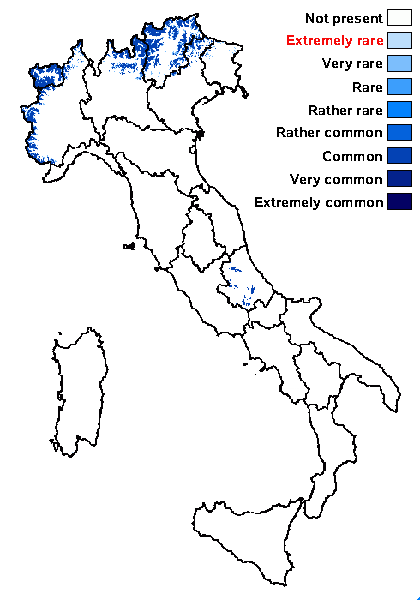
Predictive model
Herbarium samples
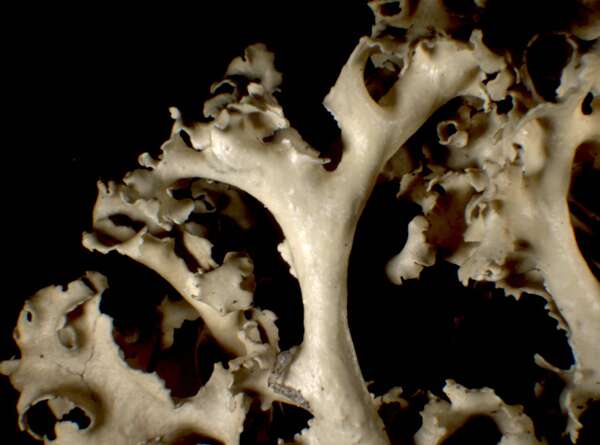

P.L. Nimis; Owner: Department of Life Sciences, University of Trieste
Herbarium: TSB (8712)
2001/12/05
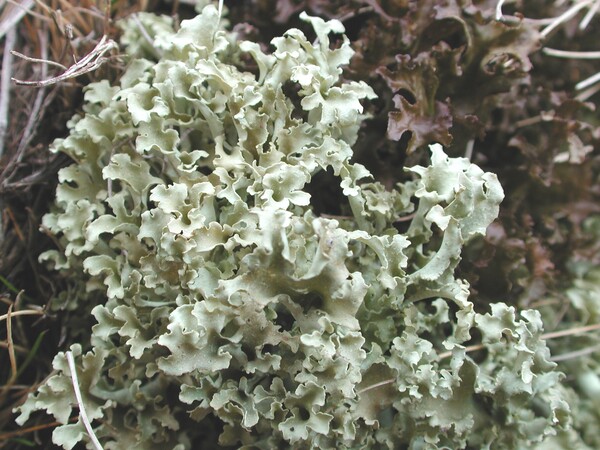

Juri Nascimbene - CC BY-SA 4.0; Owner: ITALIC - Dyades Project - Dept. of Life Sciences, University of Trieste
Italy, Trentino-Alto Adige, Trento, Monte Bondone
2014
Growth form: Fruticose
Substrata: soil, terricolous mosses, and plant debris
Photobiont: green algae other than Trentepohlia
Reproductive strategy: mainly asexual, by thallus fragmentation
Commonnes-rarity: (info)
Alpine belt: common
Subalpine belt: very rare
Oromediterranean belt: absent
Montane belt: absent
Submediterranean belt: absent
Padanian area: absent
Humid submediterranean belt: absent
Humid mediterranean belt: absent
Dry mediterranean belt: absent

Predictive model
| Herbarium samples |


P.L. Nimis; Owner: Department of Life Sciences, University of Trieste
Herbarium: TSB (8712)
2001/12/05


 Index Fungorum
Index Fungorum
 GBIF
GBIF
